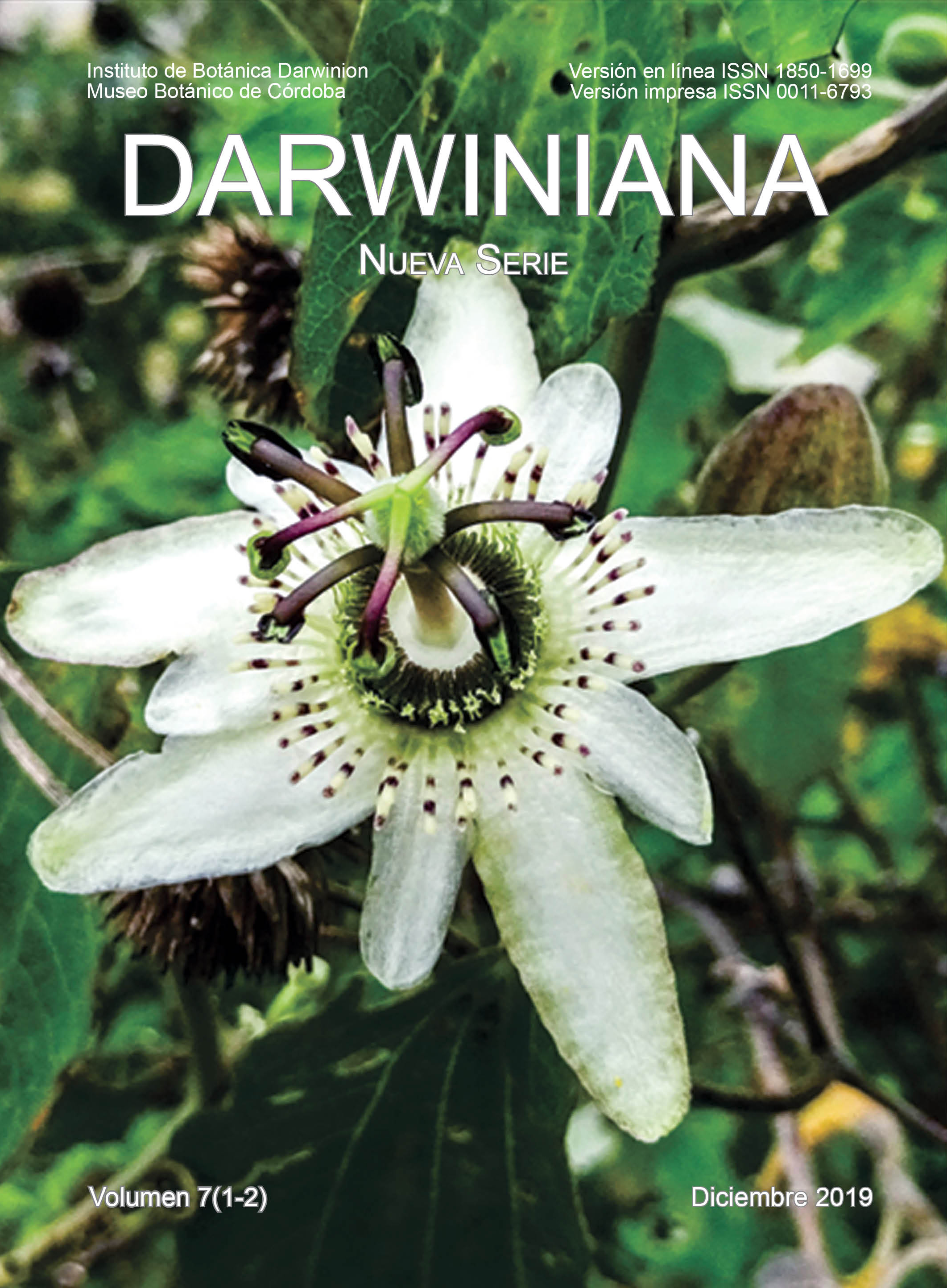Acid-thermophilic cianobacteria of the Copahue Thermal Complex, Neuquén, Argentina
DOI:
https://doi.org/10.14522/darwiniana.2019.71.834Keywords:
Argentina, Copahue, Cyanobacteria, Cyanoprokaryota, hot springsAbstract
The objective of this work was to identify the species of acid-thermophilic cyanobacteria which, together with the waters, microalgae and mud, are important thermal resources used for therapeutic purposes in the Copahue Thermal Complex. The work presents descriptions, comments, and illustrations of the 11 identified species belonging to nine genera: Chroococcidiopsis, Chroococcus, Kamptonema, Komvophoron, Leptolyngbya, Mastigocladus, Oscillatoria, Phormidium and Spirulina, collected in ten sampling sites. Five species: Chroococcus membraninus, Chroococcidiopsis thermalis, Spirulina gracilis, Phormidium thermobium, and Komvophoron jovis, are cited for the first time for Argentina. In addition, four species were isolated and maintained in unialgal culture: Chroococcus membraninus, Chroococcidiopsis thermalis, Kamptonema animale and Mastigocladus laminosus. M. laminosus was the most frequently encountered species of the area, since it was found in eight of the ten sites. The Laguna Los Callos was the most diverse site, with the largest number of species, eight in total. All the species of cyanobacteria studied in the present work are used, either through the direct application of the mats or through the use of their active components in water, and mud.
Downloads
Published
How to Cite
Issue
Section
License

Starting on 2012, Darwiniana Nueva Serie uses Licencia Creative Commons Atribución-NoComercial 2.5 Argentina .






